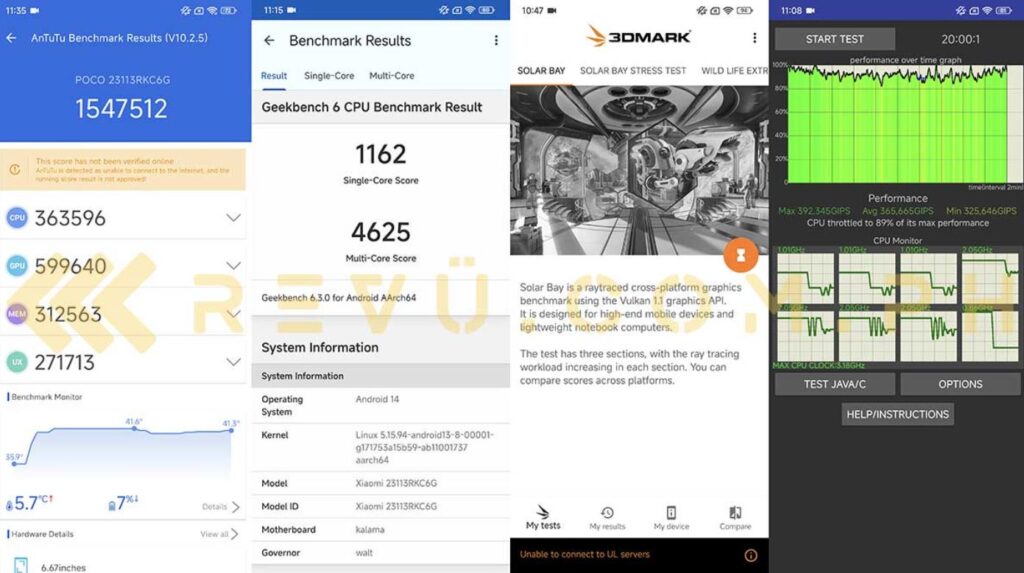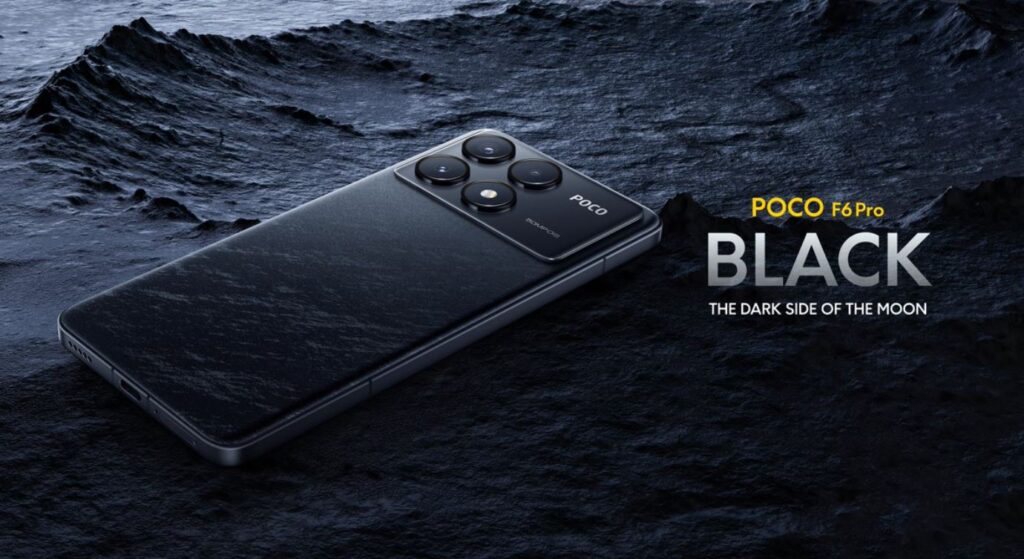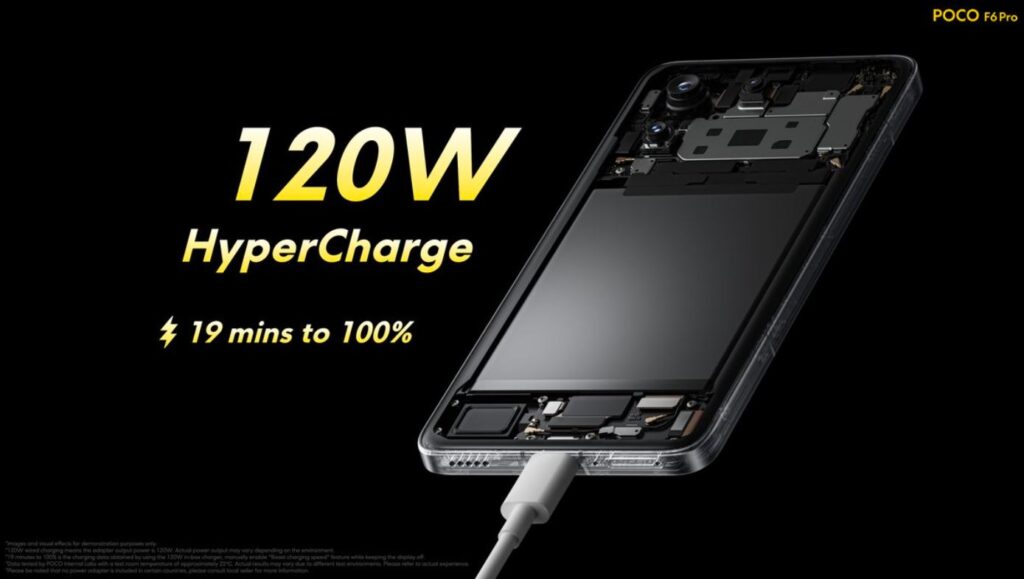The POCO brand is regarded for providing the best price-to-performance ratio with its flagship smartphones. We’re talking about the POCO F series, and based on last year’s evaluation of the F5 and F5 Pro, we expect the same from the next generation. This time F series has taken new heights with quite a powerful Poco F6 Pro! Let’s check out its specs, launch date, price, and detailed review in this article.

Poco F6 Pro Launch Date & Price
Poco F6 Pro is set to launch on May 26, 2024 globally. Regarding price, there are no specific figures out yet however, if look at equivalent brands with the same specs the price should be anywhere between 36,000 to 39,0000 INR.
You can place your order through any of the distributors i.e. via the official website, Flipkart, or Amazon!
Also read: Vivo T3 5G Launched With Dimensity, Is This The Mid Range King?
Poco F6 Pro Specs At A Glance
| Category | Specification |
|---|---|
| NETWORK | Technology: GSM / HSPA / LTE / 5G |
| LAUNCH | Announced: 2024, May 23 Status: Available. Released 2024, May 23 |
| BODY | Dimensions: 160.9 x 75 x 8.2 mm (6.33 x 2.95 x 0.32 in) Weight: 209 g (7.37 oz) SIM: Dual SIM (Nano-SIM, dual stand-by) |
| DISPLAY | Type: AMOLED, 68B colors, 120Hz, Dolby Vision, HDR10+, 700 nits (typ), 1200 nits (HBM), 4000 nits (peak) Size: 6.67 inches, 107.4 cm² (~89.0% screen-to-body ratio) Resolution: 1440 x 3200 pixels, 20:9 ratio (~526 ppi density) |
| PLATFORM | OS: Android 14, HyperOS Chipset: Qualcomm SM8550-AB Snapdragon 8 Gen 2 (4 nm) CPU: Octa-core (1×3.2 GHz Cortex-X3 & 2×2.8 GHz Cortex-A715 & 2×2.8 GHz Cortex-A710 & 3×2.0 GHz Cortex-A510) GPU: Adreno 740 |
| MEMORY | Card slot: No Internal: 256GB 12GB RAM, 512GB 12GB RAM, 1TB 16GB RAM UFS 4.0 |
| MAIN CAMERA | Triple: 50 MP, f/1.6, (wide), 1/1.55″, 1.0µm, PDAF, OIS 8 MP, f/2.2, (ultrawide) 2 MP, f/2.4, (macro) Features: LED flash, HDR, panorama Video: 8K@24fps, 4K@24/30/60fps, 1080p@30/60/120/240/960fps, 720p@1920fps, gyro-EIS |
| SELFIE CAMERA | Single: 16 MP, (wide) Features: HDR Video: 1080p@30/60fps, gyro-EIS |
| SOUND | Loudspeaker: Yes, with stereo speakers 3.5mm jack: No 24-bit/192kHz Hi-Res & Hi-Res wireless audio |
| COMMS | WLAN: Wi-Fi 802.11 a/b/g/n/ac/6/7 (market/region dependent), dual-band, Wi-Fi Direct Bluetooth: 5.3, A2DP, LE, aptX HD, LHDC Positioning: GPS (L1+L5), BDS (B1I+B1c+B2a), GALILEO (E1+E5a), QZSS (L1+L5), NavIC (L5), GLONASS NFC: Yes (market/region dependent) Infrared port: Yes Radio: No USB: USB Type-C 2.0, OTG |
| FEATURES | Sensors: Fingerprint (under display, optical), accelerometer, proximity, gyro, compass |
| BATTERY | Type: 5000 mAh, non-removable Charging: 120W wired, PD3.0, QC3+, 100% in 19 min (advertised) |
| MISC | Colors: Black, White Price: £469.90 / €499.90 |
| TESTS | Performance: AnTuTu: 1287854 (v9), 1584439 (v10) GeekBench: 4859 (v5), 5310 (v6) Display: Contrast ratio: Infinite (nominal) Loudspeaker: -24.8 LUFS (Very good) |
Performance & Benchmarks

The POCO F6 Pro is powered by the Snapdragon 8 Gen 2 – a flagship chipset that offers an experience akin to the more recent Snapdragon 8 Gen 3. This chipset is combined with 16GB of LPDDR5X memory and 1TB of UFS 4.0 storage.
This provides a seamless and fluid overall experience, whether you’re browsing social media or playing graphically heavy games.
We spent several hours testing the phone with games such as Mobile Legends, Night Crows, and MU Online. The performance was lag-free, with a constant 120Hz refresh rate even when the graphics settings were set to maximum. However, the phone generates more heat than other devices with similar chipsets.
As expected, the POCO F6 Pro performed quite well in our benchmark testing, with Antutu scores exceeding 1.5 million points.
Benchmark Results

Antutu Benchmark v10: 1,551,302
Antutu Storage: 3,305 MB/s (Read), 3245 MB/s (Write), 987 MBs/s & 902 MB/s (Random Read/Write)
PCMark Work 3.0: 17,422
GeekBench 6 CPU: 1,151 (Single core), 4,288 (Multi-core)
GeekBench 6 GPU: 7,558 (OpenCL), 8,355 (Vulkan)
Design
The first time we held the item, it felt lighter than the specifications indicated. The premium feel is adequate for the price, but not comparable to more expensive smartphones with equal specifications.

The aluminum sides are gently curved, making the device easier to grasp and more pleasant than smartphones with flat sides and sharp edges. At the back, four circles house the three rear cameras and the flash, which are organized in a rectangle design with POCO branding and the slogan “50MP OIS”.
Our units are available in black and white, with the white version boasting a matte finish glass back and a unique design reminiscent of marble tiles. The black one has a Calacatta marble look to it.
The left side just has antenna bands, whereas the right side has power and volume buttons, as well as additional antenna bands. These buttons provide adequate tactile feedback for their price.
The phone’s bottom features a dual-SIM slot, a Type-C connector, and a speaker. The top contains an infrared blaster, which might be useful in an emergency, such as when you lose the remote for your air conditioner or other home appliances, as well as a backup microphone.
The front features a big AMOLED display with thin bezels. However, I wish the bottom bezel were thinner so that it matched the other sides.
Unfortunately, the POCO F6 Pro lacks an IP rating, which could be attributed to cost-cutting tactics. It does, however, include rubber flaps around the SIM tray port.
Display
The POCO F6 Pro features a 6.67-inch AMOLED display with a refresh rate of up to 120Hz. Notably, there are just two refresh rate modes: 60Hz and 120Hz, which drop to 30Hz when the screen is locked.

I like the flat display to the curved screens featured on other phones because it improves the user experience and makes it easier to install tempered glass protection if you are the type of user who does so.
You may reduce the display resolution to 1080p to save battery life, but I like to use it at its full potential.
The display has a maximum brightness of 1200 nits, which is not the brightest available but is still viewable outside. Viewing angles are great, even from extreme postures. However, POCO has not identified the brand of glass used in the POCO F6 Pro.
In terms of audio, the POCO F6 Pro has a stereo speaker configuration, with one at the top and another at the bottom. They provide strong sounds, but the separation of sounds is a little inadequate for my tastes.
The POCO F6 Pro has two biometric authentication options: an in-display fingerprint sensor and Face Unlock. The face unlock feature allows you to register up to two faces, while the fingerprint sensor can store up to five fingerprints. Face unlock is faster but less secure than the fingerprint scanner, which is more secure but takes longer to unlock the device.
Additionally, the fingerprint scanner functions as a heart rate sensor, producing results comparable to those of a smartwatch.
Camera

The POCO F6 Pro has a triple back camera arrangement, including a 50-megapixel f/1.6 primary camera, an 8-megapixel f/2.2 ultra-wide camera, and a 2-megapixel f/2.4 macro camera. I would have chosen a telephoto lens over the 2-megapixel macro camera for increased versatility.
The camera app is simple and has several modes, including Pro, Documents, Night, Video, Portrait, and Camera. It runs well with minimal shutter lag.
Daylight images from the main camera are stunning and ideal for social networking. However, the default settings oversharpen photographs and produce photos with great contrast. While some people may enjoy this appearance, I prefer more naturally colored photographs.
The ultra-wide camera is effective for capturing architecture and restricted spaces. However, it struggles in low-light situations, frequently generating murky shots.
Night photography on the POCO F6 Pro is impressive, particularly with the main camera. It takes clear, detailed photographs even in low-light conditions. However, the ultra-wide sensor does not work well under these conditions.
The front-facing 16MP selfie camera takes excellent photographs but requires adequate lighting to create the finest results.
The rear camera can capture videos in 8K at 30 fps, while the front camera supports 1080p at 30 fps.
The back camera’s video quality is great in good daylight, and the Optical Image Stabilization (OIS) smoothes out video recording.

Overall, the POCO F6 Pro provides a satisfying camera experience. Its main and ultra-wide cameras perform well in daylight and well-lit scenes, and the primary sensor’s night photography is remarkable. The selfie camera and video recording capabilities make this a versatile and dependable camera configuration for whatever shooting needs you may have.
Battery and Connectivity
The POCO F6 Pro supports all connectivity technologies, including Wi-Fi 7, dual-SIM 5G, Bluetooth 5.3, NFC, and GPS. You also receive an infrared sensor to pair with household items like televisions and air conditioners.

In terms of battery performance, I was able to deplete the battery from 100% to 20% in 5 hours and 44 minutes of continuous gameplay, which is excellent given that the screen brightness was set to 80%.
In our PC Mark Battery test, the device lasted a respectable 10 hours and 50 minutes, while our regular video loop test lasted 18 hours and 45 minutes.
The POCO F6 Pro supports four battery modes:
- Performance Mode: This mode is rarely used because the Snapdragon 8 Gen 2 is capable of handling most intensive tasks without issue.
- Balanced Mode is the default configuration out of the box.
- Battery Saver: This option limits system app activities, freezes background apps, and may affect alerts. It disables background services and functionality, including sync, 5G network, and haptic feedback. Use this mode to extend battery life while keeping a regular user experience.
- Ultra Battery Saver: This mode disables most power-consuming features and drastically limits the device’s functionality to essential phone functions such as SMS and calls. It is useful when you are unable to locate a power source to charge your gadget.
Given the POCO F6 Pro’s battery capacity, these settings may be infrequently used. Under usual use, the battery can last a day or two. In addition, the smartphone supports 120W rapid charging, which can fully charge the battery in 30 minutes.
When you enable the “Boost charging speed” feature, you can fully charge the phone in 20 minutes.
Bottom Line
Now that you too have a fair idea from the above discussion about this phone. In my opinion, this is a performance beast and you will see literally no complaints about this phone’s performance. But yes there are a few issues, like the heating issue and its sharp edges but I guess these are inherited(considering POCO’s previous model.) However, if the phone comes below 35,000 INR, then it is justifiable. I, myself am a regular user of Poco X6 pro and have no complaints at all except heating issues, that too only on a few incidents. For example, while doing continuous and intense gaming at 120fps. But what I loved is that, nowadays POCO is focused on performing its best version. You may observe certain heating issues (if you are doing intense tasks at above-normal temperatures) otherwise it is a good choice to go. Yes, if you are more camera-focused and not worrying about performance then you should rethink your choice.